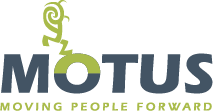We are at a pivotal moment in history right now where leadership is being examined with a critical eye regarding their diversity and inclusion efforts in the workplace. It is not enough to make blanket statements about the company culture being inclusive, especially if there is no evidence to back up those claims. We all have the immense opportunity to increase efforts to build a truly diverse and inclusive organization.
Now, the ability to recruit for diverse talent starts like many other key initiatives within an organization – you need a solid plan. Like any good plan, you will need a roadmap and collaboration from others in the organization.
Let’s talk about a few steps that your organization can take to build a successful diversity recruiting plan:
Step One: Develop Internal Talent and Company Culture
You might be thinking the first step is to look externally for diverse hires. However, if your organization does not have the structures and plans already in place to support diversity, equity, and inclusion (DEI) efforts, the recruiting plan will not be sustainable. Develop internal talent and culture first! Many companies make the mistake of not looking to their current team who are dedicated to the mission and vision of the organization. These individuals often possess the values that your organization requires for successful leadership.
Creating a program that identifies, mentors, and sponsors the future leaders in your organization not only creates a pipeline of internal talent, but it can motivate external talent to join your organization. As cliché as it sounds, show that your organization can walk the walk! Creating a reputable company culture that actively promotes diversity and inclusion from within is a catalyst for attracting new diverse talent.
Step Two: Display Representation
After you have built your internal plan, start keeping track of the wins and milestones. A positive track record that shows prospective talent that you hire and promote diversity should be on full display. The importance of representation in the workplace cannot be understated. People want to know that your organization celebrates diversity and need to see people who look like them are in impactful positions. If your C-suite does not reflect the diversity statement on your website, you will face some challenges in recruiting diverse talent. In these cases, be sure to avoid tokenism – a symbolic effort to be inclusive. Be sincere and genuine in your selection and efforts.
Step Three: Teach Your Recruiters How to Avoid Hiring Biases
It is important to have clear expectations for everyone involved in the hiring process. This includes teaching the HR and recruitment team about avoiding unconscious bias in the recruiting and sourcing process. Unconscious bias happens when opinions about candidates are based solely on first impressions, or historically-based stereotypes regarding specific demographics. Focus on the skills, experience, and competencies needed for the job rather than the likelihood the candidate would be a great addition to the team happy hour.
Another area unconscious bias can pop up is through writing job ads. Make sure you are using inclusive language, like gender-neutral descriptors and avoiding gender-coded words. For example, research has shown women are less likely to apply for a job in which they do not feel they are perfectly aligned; try reducing the number of “preferable” qualities in order to increase the number of women who apply.
Step Four: Standardize Interview Questions
Use interview questions to your advantage! One of the best ways to eliminate bias in the interview process is to standardize the questions to allow for clear comparisons. Hiring managers often hire candidates who pass the “fit” test – creating homogeneous environments. Again, make sure to focus on the desired skills and evaluate other qualities accordingly. The fact is that many people don’t interview well and allowing candidates to highlight their skills and abilities reduces the impact of a challenging interview.
Step Five: Use Inclusive Interview Panels
Creating interview panels of diverse populations will allow different perspectives and voices to be considered when making hiring decisions. This approach also allows candidates to see your organizational diversity early in the process.
Step Six: Cast a Wider Net
There are a few different ways to expand your recruitment circles. You could include new geographies, changing demographics, and exploring different philosophies. For example, if the diverse candidates you are seeking are not in your immediate area, consider looking at out-of-state candidates and including a relocation fee into your budget. A willingness to expand your search to non-traditional locations and using non-traditional methods is a key driver to successful diverse recruitment. When it comes to finally hiring a candidate, you will have all the tools necessary to hire the best talent available.
Step Seven: Track Your Progress
It will be important to track your efforts and the practices you put in place to establish accountability for your hiring managers and recruiters. There are a variety of ways to track results, whether you are tracking your talent sources, the number of candidates who reach the interview stage, and of course, how many candidates are hired. If you want to go the extra mile, track how long employees stay at the organization to determine if there is a problem with retention and culture. I am a firm believer in the idea that you get what you measure, and you measure what matters.
These are just a few steps your organization can implement relatively quickly to expand your diversity recruiting efforts. For more information or additional training on how to build a successful DEI recruiting plan, please contact Motus and let us know how we can help you with successful planning.







